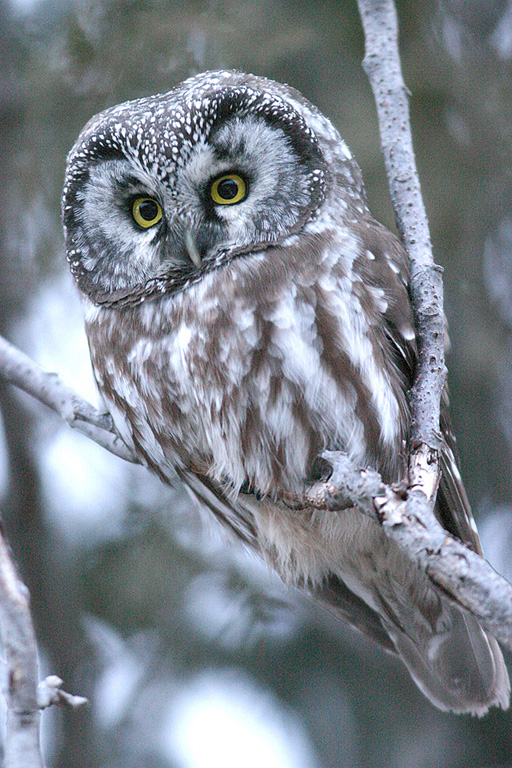Facts About Boreal owl
The Boreal Owl, also known as Tengmalm's Owl or Richardson's Owl, is a small species of owl that inhabits both Europe and North America. Belonging to the family Strigidae, this owl is distinguished by its nocturnal habits and preference for taiga forests. Its plumage is a mix of brown and white feathers, and it has a disproportionately large head with striking yellow eyes, often giving it a "surprised" expression. This solitary bird’s call closely resembles the "winnowing" sound produced by the North American Wilson's Snipe.
Boreal Owls favor dense coniferous forests for breeding and typically lay between 3 to 6 eggs in tree cavities. Their diet predominantly consists of voles, small mammals, birds, insects, and other invertebrates. While they generally do not migrate, some Boreal Owls move southward during the autumn.
These owls face threats from larger owls and raptors, which can impact their lifespan. There are seven recognized subspecies of the Boreal Owl, each distributed across different regions in Scandinavia, North America, and Asia.
To support their populations, naturalists and biologists often install nest boxes to facilitate their breeding efforts. Such conservation measures are vital for maintaining healthy populations of this enchanting little owl.

 Hungary
Hungary